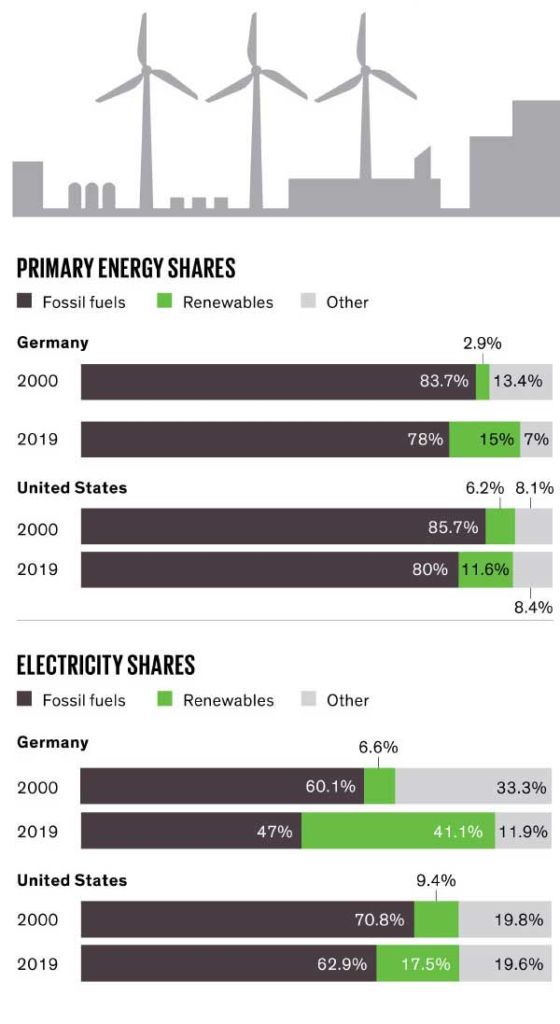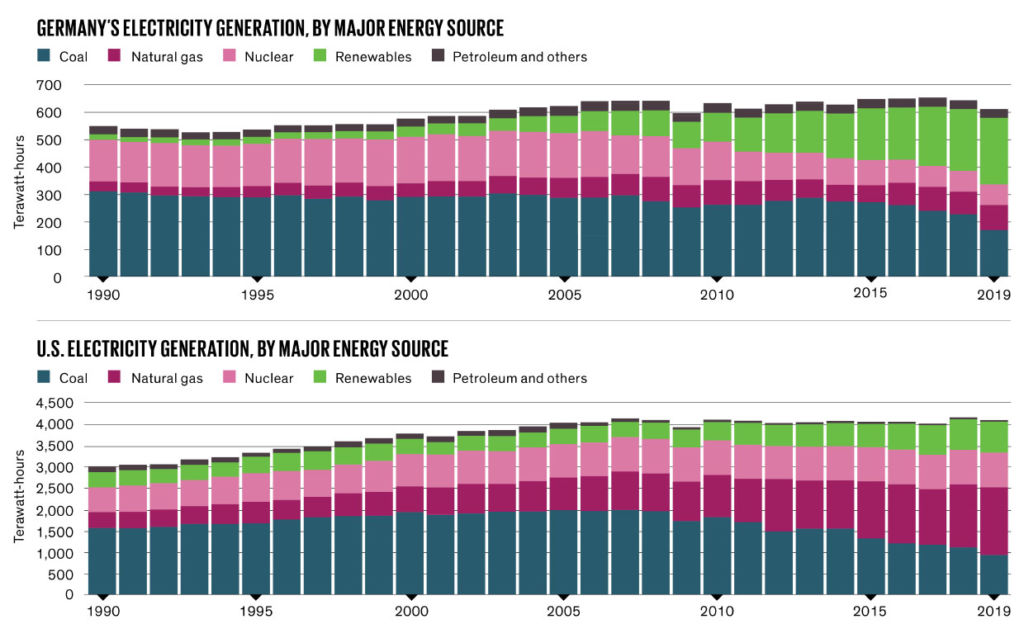Germany’s Energy Disaster 20 Years Later
When it comes to energy policy, legislators in Minnesota often cite Germany as an example of a shining star on a hill. This fondness for Germany probably stems from the taxpayer-funded trips that lawmakers take to experience the German Energiewende, or “Energy Transition.”
The ironic thing about their love affair with Germany is that the country’s experiment with wind and solar power has been a total disaster, resulting in skyrocketing electricity prices and a failure to produce an electric grid that emits less carbon dioxide than the United States.
You don’t have to take my word for it, either. Vaclav Smil, a world-renowned energy expert has said so himself. Smil’s book Energy and Civilization, was the source material I relied heavily upon for my Thinking Minnesota article “The Future of Energy.”
You can read Smil’s article on the effects of German energy policy, compared to the United States, below:
In 2000, Germany launched a deliberately targeted program to decarbonize its primary energy supply, a plan more ambitious than anything seen anywhere else. The policy, called the Energiewende, is rooted in Germany’s naturalistic and romantic tradition, reflected in the rise of the Green Party and, more recently, in public opposition to nuclear electricity generation. These attitudes are not shared by the country’s two large neighbors: France built the world’s leading nuclear industrial complex with hardly any opposition, and Poland is content burning its coal.
The policy worked through the government subsidization of renewable electricity generated with photovoltaic cells and wind turbines and by burning fuels produced by the fermentation of crops and agricultural waste. It was accelerated in 2011 when Japan’s nuclear disaster in Fukushima led the German government to order that all its nuclear power plants be shut down by 2022.
During the past two decades, the Energiewende has been praised as an innovative miracle that will inexorably lead to a completely green Germany and criticized as an expensive, poorly coordinated overreach. I will merely present the facts.
The initiative has been expensive, and it has made a major difference. In 2000, 6.6 percent of Germany’s electricity came from renewable sources; in 2019, the share reached 41.1 percent. In 2000, Germany had an installed capacity of 121 gigawatts and it generated 577 terawatt-hours, which is 54 percent as much as it theoretically could have done (that is, 54 percent was its capacity factor). In 2019, the country produced just 5 percent more (607 TWh), but its installed capacity was 80 percent higher (218.1 GW) because it now had two generating systems [emphasis added].
The new system, using intermittent power from wind and solar, accounted for 110 GW, nearly 50 percent of all installed capacity in 2019, but operated with a capacity factor of just 20 percent. (That included a mere 10 percent for solar, which is hardly surprising, given that large parts of the country are as cloudy as Seattle.) The old system stood alongside it, almost intact, retaining nearly 85 percent of net generating capacity in 2019. Germany needs to keep the old system in order to meet demand on cloudy and calm days and to produce nearly half of total demand. In consequence, the capacity factor of this sector is also low.
It costs Germany a great deal to maintain such an excess of installed power. The average cost of electricity for German households has doubled since 2000. By 2019, households had to pay 34 U.S. cents per kilowatt-hour, compared to 22 cents per kilowatt-hour in France and 13 cents in the United States.
We can measure just how far the Energiewende has pushed Germany toward the ultimate goal of decarbonization. In 2000, the country derived nearly 84 percent of its total primary energy from fossil fuels; this share fell to about 78 percent in 2019. If continued, this rate of decline would leave fossil fuels still providing nearly 70 percent of the country’s primary energy supply in 2050.
Meanwhile, during the same 20-year period, the United States reduced the share of fossil fuels in its primary energy consumption from 85.7 percent to 80 percent, cutting almost exactly as much as Germany did. The conclusion is as surprising as it is indisputable. Without anything like the expensive, target-mandated Energiewende, the United States has decarbonized at least as fast as Germany, the supposed poster child of emerging greenness.
Unfortunately, Minnesota seems destined to repeat Germany’s energy disaster. Xcel Energy wants to retire their coal plants years before the end of their useful lifetimes and replace them with massive installations of wind, solar, and natural gas. This means the Land of 10,000 Lakes will repeat the German mistake of building two or three generating systems at enormous expense to Minnesota families and businesses.
American Experiment’s modeling shows Xcel’s Green New Deal would cost $57 billion through 2051, an average annual cost of $1,400 for each of Xcel Energy’s customers. This massive spending spree will be paid for by families and businesses who are forced to buy their electricity from Xcel by the state of Minnesota. Because of our government, Minnesotans have no freedom to choose another electricity provider who provide quality service for a lower price.

